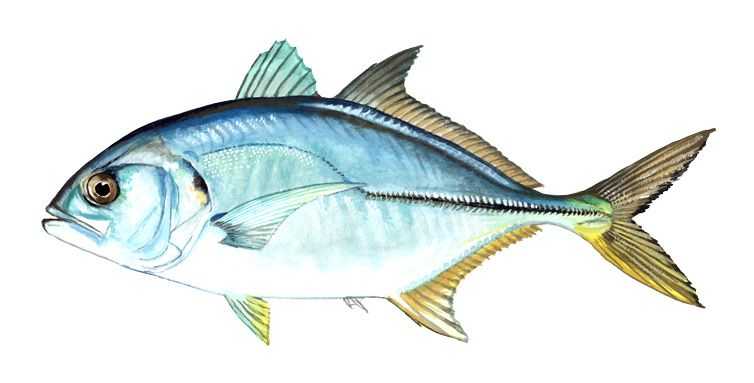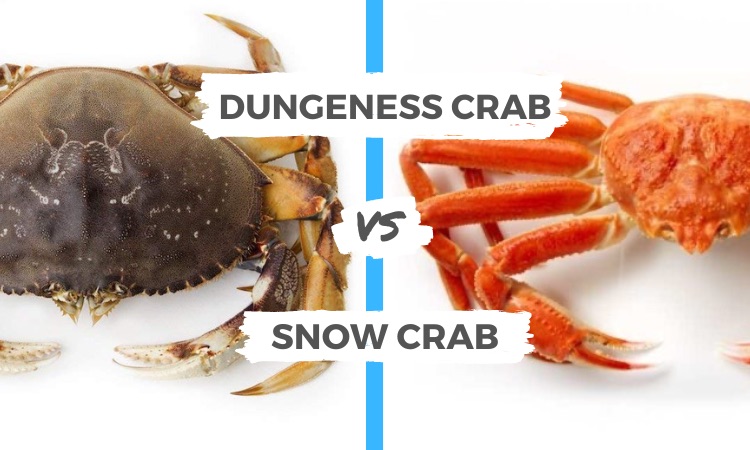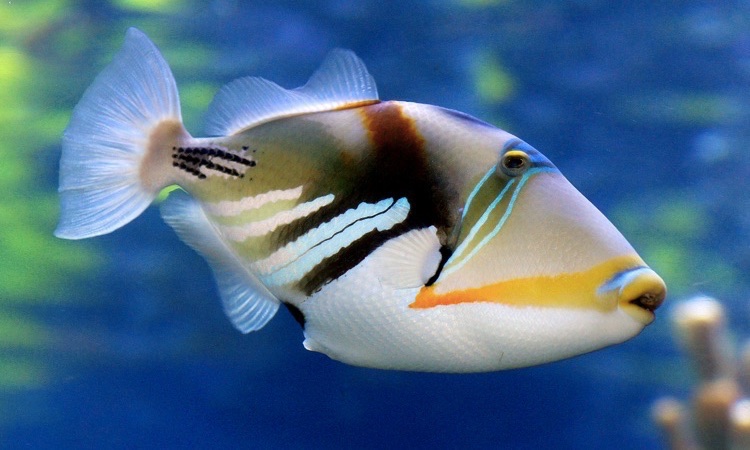If you work in the seafood industry, own a restaurant, are a sushi chef, run a supermarket chain, or work for a seafood distributor, you know that bluefin is the Rolls Royce of seafood.
When you find a vendor that sells these fish, make sure you know how consistent the quality and availability will be before negotiating the bluefin tuna price.
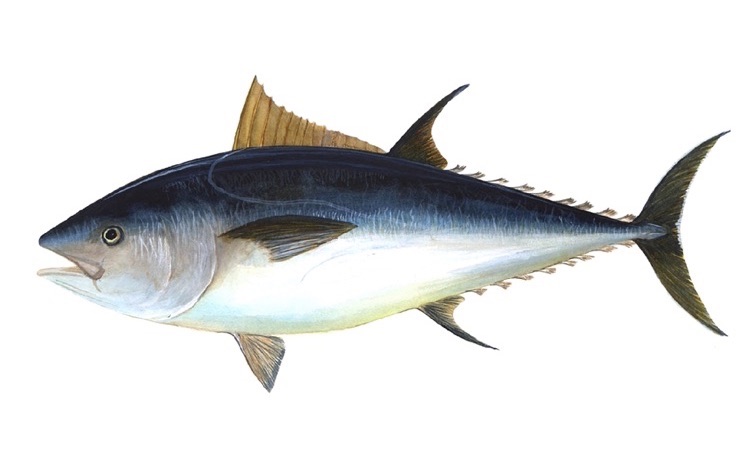
How Much is a Bluefin Tuna Worth?
The cost of bluefin tuna varies depending on a number of elements. Regardless of where you get your Bluefin tuna, it should never be inexpensive.
Bluefin tuna wholesalers in the United States charge a minimum of $200 per pound for Bluefin tuna from Japan, whereas local Bluefin tuna wholesale price per pound might cost between $20 and $40. Oma bluefin can cost as much as $400 a pound in high season.
Some Bluefin is sent to Japan for butchering and then brought back to the United States, which raises the wholesale price.
Most Expensive Bluefin Tuna?
A 612-pound bluefin tuna fetched $3 million during Japan’s first bluefin tuna auction of the year in 2019. It is a custom in Japan where the first fish sold is always more expensive than others.
Why is Bluefin Tuna so Expensive?
The Atlantic aptly describes it as “sushinomics”. Simple laws of supply and demand. Other factors like culture and high export costs also play a part in driving up the price of bluefin tuna. Below we explore these reasons in more detail.
1. Overfishing
Overfishing is a significant issue in the fishing business. This refers to an area of the ocean with too many fishermen per fish, as opposed to one with insufficient fishers. With numerous fishing outfits attempting to capture bluefin tuna, their numbers plummet rapidly.
Bluefin tuna come in three different species, and all of them are under severe overfishing pressure. The problem with overfishing isn’t that it’ll go away after a single season; the issue persists.
Some fish reproduce rapidly, but they don’t do so fast enough to satisfy the demands of fishermen. As a result, their numbers fall every year. If everyone on the planet gave up eating fish for a few years, their numbers would never return to previous levels.
Regulations are in place to prevent overfishing, but they aren’t working. That’s because there is a large black market for fish, especially bluefin tuna, in which the rules don’t apply.
Fishers who aren’t licensed will fish outside of regulations. They’ll fish in restricted areas, and they’ll catch more fish than the law allows.
This only adds to the problem when there’s already a scarcity of bluefin tuna. The supply of bluefin tuna is being hampered by overfishing. When demand stays high while supplies are dwindling, the price rises dramatically.
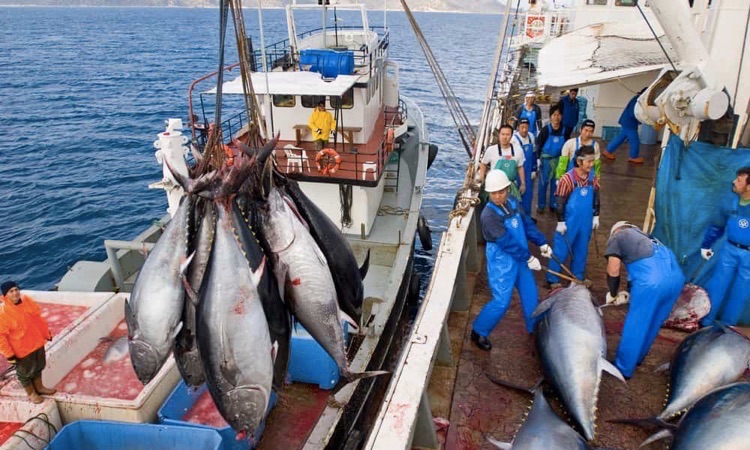
2. Breeding in Captivity is Impossible
Many businesses and researchers have tried to domesticate bluefin tuna in captivity, but their efforts have not been very successful.
Bluefin tuna are particularly vulnerable to a variety of conditions. Water temperature, sound pollution, and even current movement can all harm their ability to reproduce.
All of these variables are difficult to manage in an artificial lake or breeding pool. They’re used to such narrow conditions that even the tiniest variation can prevent them from reproducing.
Although they can’t be bred in captivity, they are the only source of supply for the industry. As a result, they are completely reliant on fishing enterprises. Fishing businesses are unable to increase the population of bluefin tuna because they can’t breed in captivity.
While demand rises, supply continues to decrease. Even if scientists or fishing outfits could develop a method for breeding them in captivity, the cost of doing so would have little effect on the price of bluefin tuna.
To keep the breeding pool in good shape with ideal conditions for tuna, they would need costly equipment and a lot of electrical power. Those expenditures would just raise the price of bluefin tuna.
3. Japanese Butchering Expertise
The Japanese are widely recognized for their ability to prepare this species of fish. They’ve eaten bluefin tuna for a lot longer than other nations.
It’s almost a part of their culture. As a result, they’ve perfected the art of butchering it. This implies that many fishing businesses will actually bring the bluefin tuna they caught to Japan for processing.
Tuna from all around the world is sent to Japan for processing, and then returned to the United States. It’s not only expensive; it’s also illegal in a number of countries.
Tuna must be kept fresh while traveling, so the company has to make sure it arrives without spoiling. That implies they’ll need high-quality temperature-controlled storage containers.
If their fish spoils, they’ll lose a significant amount of money on their investment. It takes energy to keep these storage containers cool as well. This adds to the cost.
When purchasing bluefin tuna, you must also consider the expenses and charges associated with shipping. Other shipping fees and expenditures make it more costly.
After Japan receives the fish, it will have to pay the butchers for their services. Japanese butchers are not inexpensive, since they are the greatest in the world at preparing bluefin tuna.
The business must pay for those services. When their meat is ready, they must pay to return to their shops. As a result, they must again cover the cost of the storage containers and the electricity required to keep them running.
When the fish is taken from their home waters, it will be subject to new price hikes. They’ll have to pay shipping fees and costs again.
The cost of bluefin tuna has already risen by the time it reaches its factory. To make up for the expenditure while still making a profit, the firm raises the consumer’s price of the fish.
4. Size
Tuna prices vary significantly depending on the size of the fish. That’s why you’ll see that tuna costs around $2 in a store, but bluefin tuna can cost hundreds of dollars.
It all boils down to size. The tuna you can buy in the store isn’t the same as bluefin tuna. Albacore is most often used.
Albacores are small, fast-growing fish. Since they’re plentiful, their supply is readily available. The availability meets demand, which keeps the price low. They are also smaller, which means they contain less meat and weight per pound.
That isn’t the case, however, with bluefin tuna. They’re huge. A recent sale of a single bluefin tuna was worth $3 million. It weighed 489 pounds and was 489 inches long.
If a fish’s price is determined by the weight of the fish, its scarcity, and the quality of meat, you may rest assured that something weighing 489 pounds will be more expensive than something weighing just a pound.
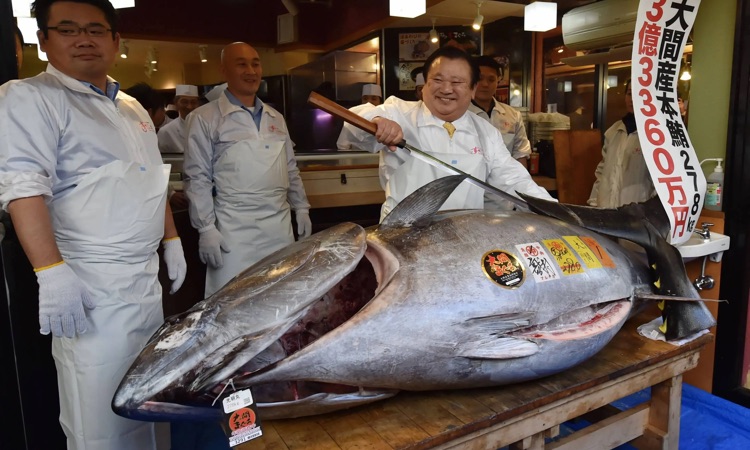
5. Marbled Meat
The marbling effect of bluefin tuna is one of the primary reasons it’s chosen for sushi.
Bluefin tuna has a higher marbleizing quality than other types of raw fish meat, making it more delicious. As a result, it generates a juicy and delectable taste that other species may not be able to duplicate.
Bluefin tuna is also known for its flavor. Because of this quality, chefs choose it over other types. As a result, demand for bluefin tuna rises because it is considered a high-quality fish.
With such high demand and a limited supply, the price of fish rises. Bluefin tuna can also mature well. You may create an exquisite and delicate variety of meat and tastes if you learn how to age fish flesh properly.
At such places, bluefin tuna is used in high-end restaurants to make sushi and other seafood dishes. It’s a luxury fish that only the wealthy can afford.
6. Location
The finest tuna is available in Japan during the winter. The finest of these fish, on the other hand, are found near Oma in Japan’s Seto Inland Sea.
That’s because the fish in that area has a higher fat content. Because it is richer in fat, it tends to be more juicy and pricey. A pound of bluefin tuna from Oma might cost up to $400.
7. Japanese Fish Auctions
If you purchase your bluefin tuna from Japan, be prepared to pay more. That’s because Japan has no fixed price for its seafood.
Instead, they sell the bluefish tuna to a third party. The highest bidder wins the fish. As a result, the fisherman gains money in this manner.
The sellers, the brokers, and even their assistants are also affected by market fluctuations. When fish prices drop, these people are all impacted because they’re in the business of selling fish. Because you’re competing with other individuals, you can anticipate to pay a premium for the fish.
8. Time of the Year
The cost of the fish will also be determined by when it is sold. In Japanese culture, what you do first in the new year is significant.
The first day of the year is a historical marker. It sets the tone for the rest of the year. Many Japanese people, therefore, attempt to accomplish something significant or important at the start of every new year.
The first few fish sold at auction fetch extra high prices because of this custom. It’s a custom that implies the rest of the year will be as prosperous and successful as the first.
This explains why the first fish sold for $1.8 million in 2013 through a Japanese auction house, as well as in 2018, when one fetched $323,000.
While it isn’t always the case, there’s a good chance that the first auction of the year will be pricey. If you want to save money, skipping the start of Japan’s fish market season might be worthwhile.
9. Cuts of Meat
Fish has several cuts of meat, like as beef or pork. The price of the fish varies depending on the cut you receive. Akami is the cheapest aspect of the meat.
That is because it is the most prevalent. It’s the leanest portion of the fish and serves as its center. In Japanese, “akami” means “red meat,” and it tastes like beef or pork red meat.
The meat of a wild caught tuna is significantly different from that of a bred tuna. Because sardines are given to bred tuna in order to fatten them, their red meat frequently has an unpleasant sardine flavor.
If you’re not a lover of sardines already, it might be tough. On the other hand, fish from the wild have a wider diet and are more diverse in flavor. That’s apparent in how their flesh tastes.
The flavor is largely found in the fat. The fillet is the most expensive fish cut. It’s tiny in comparison to other tuna species, and it’s quite costly. Butchers will remove the filet from the otoro section of the fish.
The fatty part of the fish is located within the head and just behind the collar. It’s the fattest portion of the fish, and it has a lot of flesh. The cost ranges from $10 per piece to $80 for each depending on size and quality of meat.
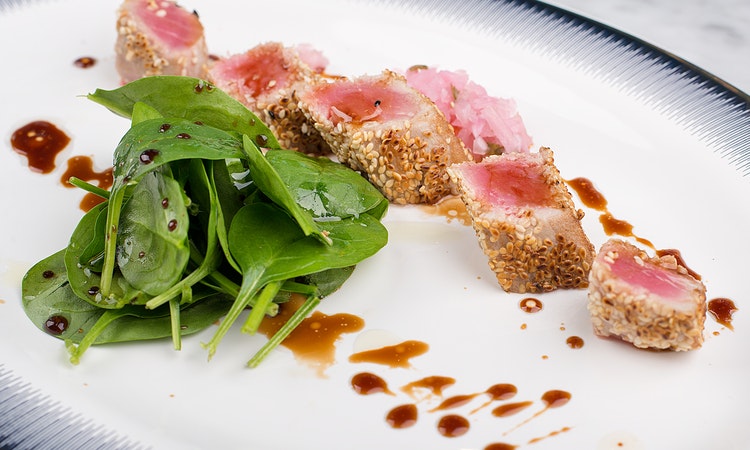
Sushi Demand
The growing popularity of sushi is the final reason bluefin tuna is so costly. While sushi has been a popular cuisine in Japan for centuries, it only recently gained popularity in the United States.
The popularity of sushi has actually exploded in recent years. More and more people in the United States have lately become devotees of sushi.
The issue is that, with more people attending the same dinner table, this results in higher demand for bluefin tuna. Despite having a modest population to begin with, growing demand is driving the price of bluefin tuna through the roof.
The decrease in bluefin tuna population during the 1970s is also to blame. The fish would have been nearly eradicated had it not been for the rules enacted today.
While their numbers are still low, commercial fishermen today attempt to fish only the legal amount they are allowed each year.
Because such limits only allow them to fish a specific amount, it means that supply will always be lower than demand.
Because of this, fish suppliers may increase their prices in order to make it more difficult for anybody to acquire the fish.
Even if a new kind of fish appears in the sushi roll, or even if there is a bluefin tuna population boom, you can anticipate the cost to be high.
Parts of the Bluefin Tuna
You get Akami which is the leaner meat from the tuna’s sides. Then you get Toro which is the fatty part of the belly of the tuna and it has two subtypes.
Chutoro is the belly area of the fish along the side between the Akami. The fattiest portion of the tuna, known as the otoro, is located on the fish’s underside.
It’s worth noting that only high-quality Otoro is available from Bluefin tuna and will be a soft pink in color, with white, bright-colored lines. Otoro has a wonderful umami flavor and texture and melts in your mouth, revealing an exquisite umami profile.
History of Bluefin Tuna
It’s no secret that increasing interest in bluefin tuna has resulted in prior overfishing; nevertheless, in recent years, efforts have been made to preserve bluefin tuna populations and assist them to recover.
In 2007, a 15-year recovery plan was put into action. The new project reduced the allowable catch and limits, as well as raised the minimum size for tuna taken from 22 pounds to 66 pounds, among other adjustments. As a result, by 2017, the Eastern Atlantic bluefin tuna was no longer being overfished.
Traceability of the Supply Chain
When it comes to traceability, you need to know where your Bluefin tuna came from. You can trust your fish is of the highest quality if you know where it came from and can see through transparent traceability.
Bluefiná also offers customers the option to purchase online and have their fish delivered right to their doorstep. Furthermore, because Bluefiná is a reputable vendor, you can trust that they know how old the fish is, when it was caught, and where it will be sent.
What to Look for When Buying Bluefin Tuna
The Two Cs, like in diamond grading, are part of what we search for when purchasing tuna: color and clarity. The interior of a grade 1 tuna will be bright red and crystal clear in appearance. This kind of tuna is ideal for sashimi.
Tuna in grade 2 is slightly less bright and more opaque than tuna in grade 1. Color and clarity are lower in this grade, making it ideal for poke bowls made with bluefin fish. Grade 3 tuna is even more opaque and ideal for grilling.

